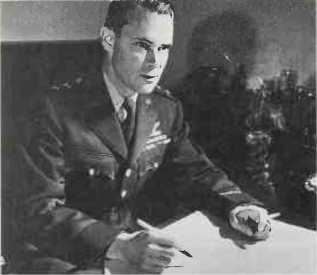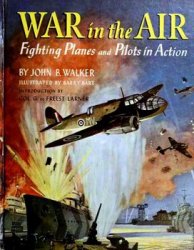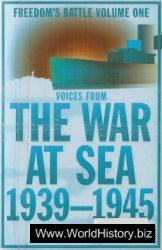Aircraft wing, and several battalion-size landing forces aboard ships of the Seventh Fleet. Elements of the Seventh Air Force deployed to Vietnam comprised, at their peak, about 60,000 men, 350 fighter-bombers, 100 C-130 transports and other craft. The Navy supplied three riverine assault forces and Seabees.
Forces stationed in South Vietnam were supplemented by others offshore, on Guam and Okinawa, and in neighbouring countries. Seventh Fleet deployed the carriers of Task Force 77 and patrolled the coast with help from US Coast Guard Squadron One. Thailand hosted eight Air Force wings and various Army support elements at the Korat, U Bon, U Dorn, Nakhon Phanom and U Tapao bases. B-52s of Strategic Air Command flew from Guam as well as Thailand, tankers from Okinawa. At the height of the war these additional forces totalled about
90,000 men. WST.
United States Marine Corps (USMC). Provided a division for France in 1917-18, spearheaded amphibious assault on Japan in the Central Pacific and played a major part in Korea and Vietnam. Amphibious specialists and highly trained assault troops, they are the largest force of “sea soldiers” in the world and have their own aviation and armour.
United States Navy in Korea. The
UsN supplied most sea power in the Korean War. It blockaded the North Korean coasts and provided air and artillery support for ground forces. Control of the sea gave UN Command a strategic flexibility denied to the enemy.
United States Strategic Air Forces In Europe (USSTAFE or USSTAF). Designation of Spaatz’s overall command of the Eighth Air Force, based in Britain, and the Fifteenth, in Italy, 1944-45.
Unryu. Japanese aircraft carrier. Completed in 1944; soon sunk by US submarine Redfish.
Unsan, Battle of (1950), the Korean War. Unsan, northwest of the Chongchon river, was the scene of the first engagement between US troops and the Chinese People’s
Volunteers on November 1-4 1950. In the last week of October, the Chinese attacked the kok divisions on the flanks of Eighth Army as it advanced towards the Yalu. Gen Walker moved 1st Cavalry Division from Pyongyang to Unsan to bolster the South Koreans and on October 31 ordered US I Corps to halt its drive on Sinuiji and fall back to the Chongchon because of the threat on its flank. The wisdom of this decision was apparent on November 1 when the Chinese attacked and destroyed the 8th US Cavalry Regiment at Unsan. The battle showed the effectiveness of Chinese tactics against a US army which relied on the roads. CM. See also chongchon river; chongju.
UNTCOK (United Nations Temporary Commission on Korea).
Established by the un General Assembly on November 14 1947 over Soviet opposition when it approved a resolution sponsored by the US. This called for elections by March 31 1948 to select a National Assembly for all Korea which would create a government and security forces. Foreign troops were to withdraw “at the earliest practicable date”. The elections were to be supervised by a temporary commission, responsible to the General Assembly, untok consisted of Australia, Canada, Nationalist China, El Salvador, France, India, Syria and the Philippines. The Ukraine was nominated but refused to serve, untcok was refused entry into the north and found that all shades of opinion in the south except the far right opposed an election which would divide the nation and create a separate South Korean state. On February 9 untcok voted to refer the problem back to the Interim Committee of the General Assembly which decided that it should observe the election “in such parts of Korea as are accessible. . .”. A separate election was held in the south on May 10 1948. Although UNTCOK observed only two percent of the polling places, it pronounced the election valid. On this basis the General Assembly recognized the Republic of Korea (rok) on December 12 1948 as a lawful government based on the will of the people and “the only such Government in Korea”. CM.
Upham, Capt Charles VC and Bar (b. l911). New Zealand. The only man to win the vc twice in World War 11 and only the third ever to do so. He won the first in Crete in May 1941 and the second at Ruweisat Ridge in July 1942.
Urquhart, Maj Gen Robert (Roy) (1901—1988). Br. A brigade commander in Sicily and Italy, 1943, Urquhart was in 1944 appointed Goc, 1st Airborne Division for the Arnhem operation. He had no experience of airborne warfare, but his infantry experience proved invaluable once the paratroopers landed. His resolute leadership sustained his men in their nine-day fight against overwhelming odds, culminating in his extrication of some 2,000 survivors in a well-planned night crossing of the Rhine. He was goc, Malaya, in 1950-52, at the height of the Malayan Emergency. RO’N.
Ushijima, Lt Gen Mitsuru (18871945). Jap. Commander of Thirty-second Army from August 1944, and entrusted with supreme command on Okinawa with orders to fight a defensive action to the last. He allowed US troops to land virtually unopposed on April 1 1945, having ordered the construction of inland defences - bunkers and caves, taking full advantage of the terrain and denying the invaders the full benefit of naval gunfire and air support - centring on his southern hq at Shuri Castle. Ushi-jima’s determined defence inflicted c50,000 casualties (the highest toll of the Pacific campaigns) on US forces before he conceded defeat by suicide on June 20. RO’N.
Ustashe. Croat fascist party, founded by Ante Pavelic 1929; came to power 1941 in puppet state of Croatia, Yugoslavia; behaved with utmost atrocity towards nonCatholic and non-Croat inhabitants; dispersed 1945.
Utah beach see normandy, invasion OF (1944).
Utah Line. Established in April 1951 during the Korean War north of the Kansas Line and designed to both threaten the base of the Iron Triangle (Chorwon, Kumwha, Pyongyang) and open the way for an advance to the Wyoming Line.
Vaagso raid. On December 27 1941 a British Combined Operations force raided the Norwegian islands of Vaagso and Maaloy. The German garrison in the town of South Vaagso offered stiff resistance to the Commando assault force but failed to prevent extensive damage to installations and shipping.
Vaal Kranz, Battle of (February 5-7 1900), Second Boer War. Following Spion Kop, Buller, with c20,000 men, again advanced across the Tugela. Planning to secure a gap in the hills surrounding Ladysmith, he feinted with one brigade at Brakfontein kopje, sufficiently distracting Botha’s 4,0(30 Boers to enable a second brigade to take Vaal Kranz kopje. However, his failure to attack Doornkop, the other height commanding the gap, meant that the gain could not be exploited. For two days, the brigade on Vaal Kranz was left unsupported while Buller appealed to Roberts for advice. Buller withdrew, with 39 killed and 369 wounded; Boer casualties were negligible.
Vaerst, Lt Gen Gustav von (1894— 1975). Ger. Commander 15th Panzer Division during the latter half of Operation “Crusader”; wounded at Gazala; given temporary command of the Afrika Korps when Nehring was wounded at Alam Haifa; Commander Fifth Panzer Army in Tunisia from March 1943; taken prisoner after the fall of Tunis in May 1943.
Valluy, Gen Jean Etienne (1899
1970). Fr. Gen Leclerc’s replacement as commander in Indochina, Valluy ordered the occupation and bombardment of Haiphong that precipitated war in December
1946. After the failure of Operation “Lea”, which he conceived, he was himself replaced. However, the Americans considered Valluy an effective commander, and in 1953 President Eisenhower urged the French government to reappoint him. The French appointed Gen Navarre instead.
Vandegrift, Gen Alexander Archer (1887—1973). US. Marine Corps officer whose combat experience dated back to the US interventions in Nicaragua (1912) and Haiti (1915) and the Veracruz landings, Mexico (1914). Appointed at short notice to prepare and command 1st Marine Division’s landings in the Solomon Islands,
1942. After successfully initiating the Guadalcanal campaign, he commanded 1st Marine Amphibious Corps at Bougainville, November 1943. Commandant, USMC, 1944; in 1945, the first active-duty usMC officer to achieve four-star rank.

Vandenberg: eminent US air staff officer
Vandenberg, Gen Hoyt S (1899
1954). US. When America entered World War II, Vandenberg was Operations and Training Officer of the US Air Staff. In 1942, after participating in planning “Torch”, he helped to organize the Twelfth Air Force and became its cos, playing a leading role in the direction of air operations during the
' final stages of the North African campaign. He returned to Washington in August 1943 as Deputy Chief of the Air Staff but by March 1944 he was in Europe as Deputy Air Commander of the Allied Expeditionary Force and Commanding Gen of the American Air Component. In this capacity he made an important contribution to the planning of the Normandy invasion before taking over the US Ninth Air Force in August 1944. His career reached its zenith when he succeeded Spaatz as cos of the usAF in 1948. PJS.
Van Fleet, Gen James Alward (“Big Jim”) (b. l892). US. Commanded the US Eighth Army during the Korean War. Graduated from West Point in 1915 and served as a Corps commander during World War II. Head of the Joint Military Aid Group in
Greece when he was ordered to Korea in April 1951. Under Van Fleet’s command Eighth Army defeated the Chinese spring offensive and fought its way back over the 38th Parallel. When truce talks began in July 1951, he used the opportunity to rebuild the rok Army and tackle the guerrilla problem behind the front. Van Fleet was frustrated by the continued military stalemate and favoured an advance to the Korean waist employing tactical atomic weapons. He retired in February 1953 and was succeeded by Gen Maxwell Taylor. CM.
Vang Pao, Maj Gen (b. l932). Laotian. Vang Pao, in 1960 a major in the Royal Lao Army and member of the Hmong minority, attracted attention by organizing resistance to neutralist and Pathet Lao forces in the Plain of Jars. American and Thai military advisers began secretly helping him to raise an army composed of his fellow Hmong in early 1961. This he did by doling out American aid to Hmong villages in return for recruits and permitting the US to bomb those that refused. His army reached a peak of 40,000 in 1967, and Vang Pao became the most powerful figure among the Hmong clans. As American aid dwindled in the early 1970s, so did Vang Pao’s army. In May 1975, at the urging of Souvanna Phouma, he resigned his command and was evacuated to Thailand along with about 3,000 of his officers and their families. WST.




 World History
World History









